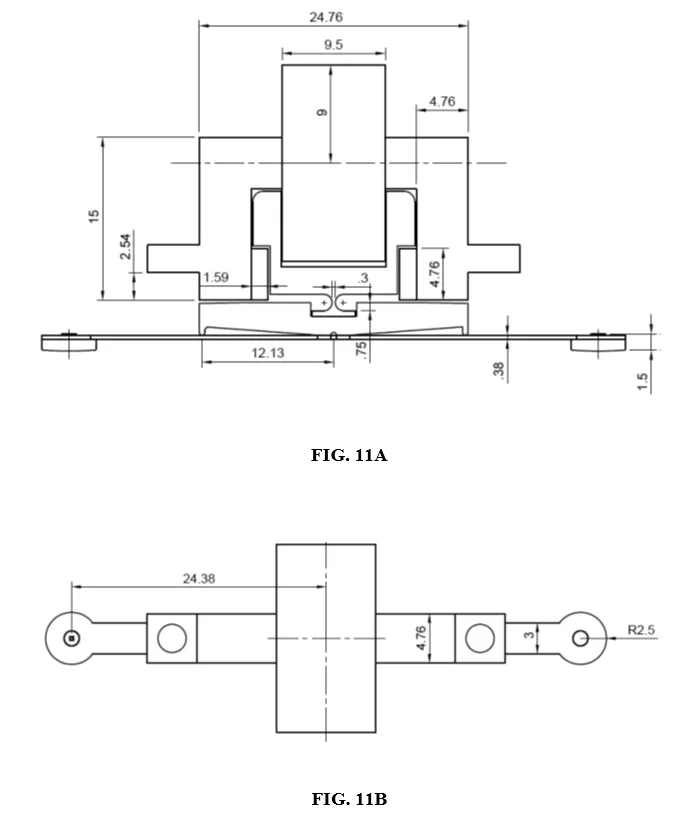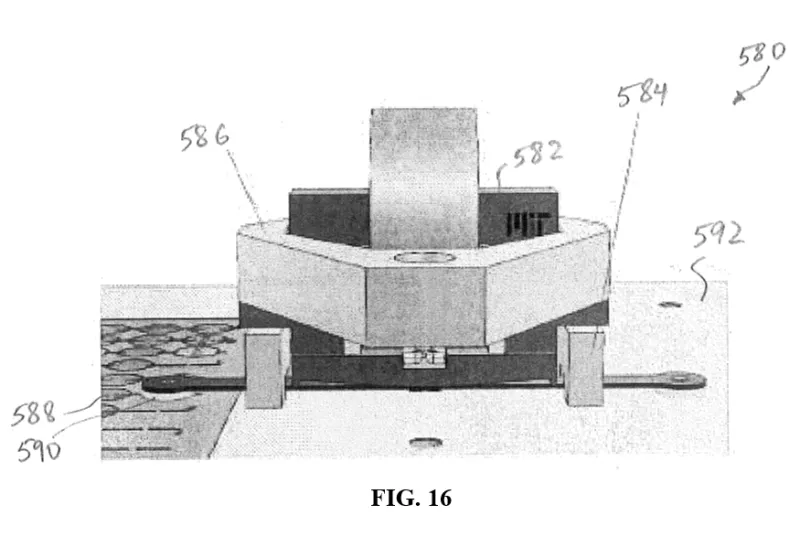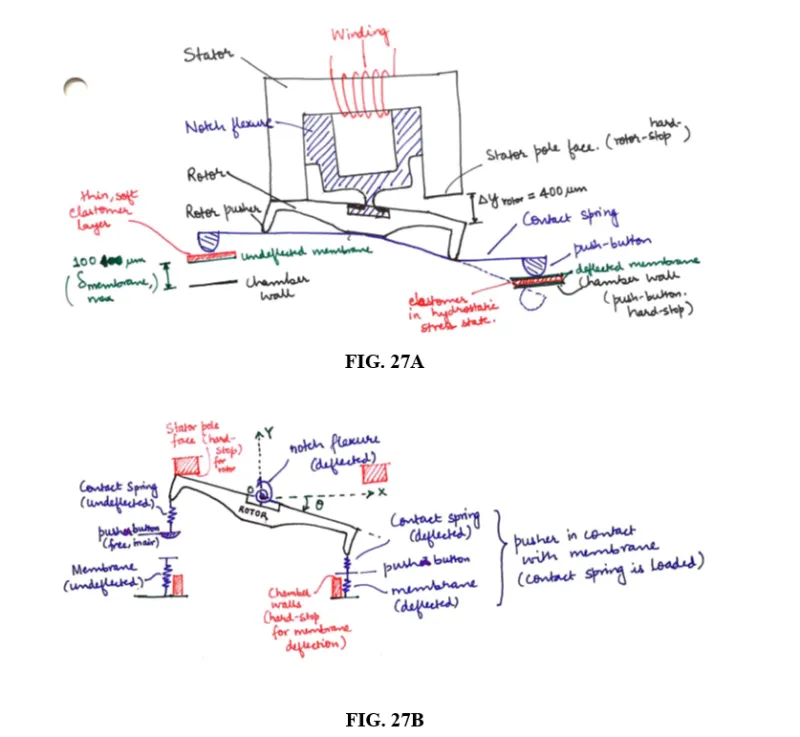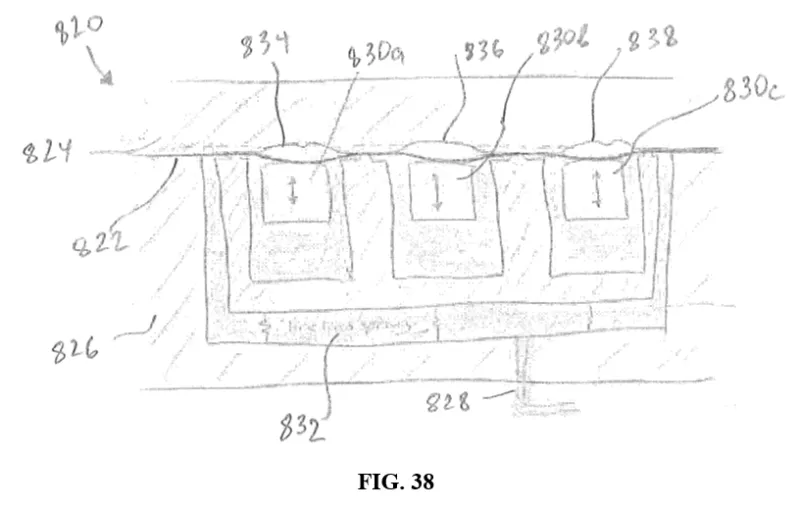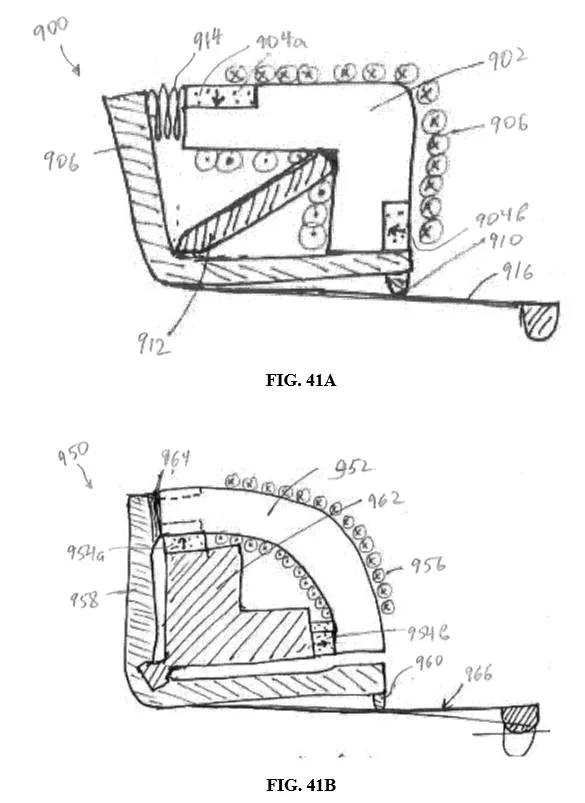Electromagnetic Pump for Organs-on-Chips, and Valve and Pump Designs for Organs-on-Chips
The invention describes a scaled-up, portable ElectroMagnetic (EM) pump with an EM actuator that reduces energy consumption. It also includes compatible injection-molded single-use platforms. Applications in organs-on-a-chip (OOC) technology and drug development research are observed.
Researchers
-
pumps and hardware for organ-on-chip platforms
United States of America | Granted | 11,749,437 -
micropumps with electromagnetic actuator for organ-on-chip platforms
Patent Cooperation Treaty | Published application
Figures
Technology
The EM pump uses electrical energy supplied by a battery. Using either a linear or teeter-totter design, the EM actuators are sufficient for meso- or micro-scale OOC platforms, and can be scaled accordingly for other suitable uses. The EM actuators consist of a stator body with permanent magnets, two protruding legs with a coiled connecting segment, a rotor or mover, and various flexures. The innovative latching design contributes to the actuator’s low energy consumption. A short pulse of energy switches the actuator state, while springs store some of the kinetic energy and recover it in the reverse stroke.
The invention also provides compatible fluidic devices that contain a fluidic plate and channels, a chamber, a contact spring, and a pump block with one or more EM actuators. A diaphragm maintains fluid sterility by physically separating the chamber and the EM actuator. The actuator exhibits a constant force, deflects the diaphragm against varying fluid back pressure, and maintains a constant stroke displacement without substantially increasing the actuator or fluid temperature.
Problem Addressed
The demand for clinically relevant, drug development research using improved microphysiological systems (MPSs) has risen. Currently, poor hardware design and fabrication of these MPSs significantly reduce long-term reliability, compatibility with existing devices, and control over fluid directionality. Pneumatic diaphragm micro-pumps are systemic components that facilitate fluid-media circulation. They require considerable effort to set up and they depend on external pressure and vacuum sources. This becomes a challenge when considering the sterility requirements during and after assembly. There exists a crucial need for a portable pump and easily integratable, single-use, sterile platforms in MPSs to further understand drug pharmacokinetics and subsequent organ response.
Advantages
- Low energy consumption
- Faster, easier set up
- Integration with single-use platforms
License this technology
Interested in this technology? Connect with our experienced licensing team to initiate the process.
Sign up for technology updates
Sign up now to receive the latest updates on cutting-edge technologies and innovations.
